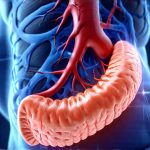The sudden, sharp pain that grips your abdomen after quickly finishing an icy drink is something many people have experienced. It’s often dismissed as a minor discomfort – a “brain freeze” on steroids – but the cramping sensation can be surprisingly intense and disruptive. This isn’t simply about feeling cold; it’s a complex physiological response involving your digestive system, nervous system, and even psychological factors. Understanding why this happens, what’s actually going on inside your body when you consume too many cold liquids too quickly, and how to mitigate the discomfort can turn a painful experience into a manageable one. It’s important to note that while generally harmless, persistent or severe cramping warrants attention from a healthcare professional; this article focuses on the common experience of temporary cramping related to rapid consumption of cold beverages.
The sensation isn’t always just about temperature. While extremely cold liquids are a primary trigger, even moderately chilled drinks can cause cramping in susceptible individuals. Factors like how quickly you drink, the volume consumed, and your individual sensitivity all play crucial roles. Some people seem naturally more prone to this type of cramping than others, and there’s no single explanation for why. Often, it’s an interplay between physiological predispositions and habits surrounding beverage consumption. This article will delve into these factors, exploring the mechanisms behind cold-induced cramping and offering practical strategies to minimize its occurrence.
The Science Behind the Cramps
The core of this phenomenon lies in the sudden temperature change within your digestive system. Your stomach, accustomed to a relatively stable internal temperature, experiences a shock when flooded with a large volume of icy liquid. This rapid cooling causes a temporary disruption of normal muscle contractions – specifically those responsible for peristalsis, the wave-like movements that move food along the digestive tract. – The stomach attempts to restore its thermal balance, initiating muscular spasms as it processes the cold influx. These spasms are what we perceive as cramping pain. It’s not unlike a sudden chill causing your muscles to tense up; but this happens internally within your gastrointestinal system.
The vagus nerve, a major component of the autonomic nervous system, is heavily involved in this process. This nerve connects the brain to many important organs, including the stomach and intestines. The cold stimulus triggers signals along the vagus nerve, potentially contributing to muscle spasms and altered digestive function. This explains why some people experience not only cramping but also nausea or even a temporary feeling of fullness after consuming cold liquids rapidly. – The vagus nerve is responsible for regulating heart rate, digestion, and other involuntary bodily functions.
Furthermore, the speed of consumption is critical. Gulping down a large amount of cold liquid overwhelms the digestive system’s ability to cope with the temperature change gradually. If you sip slowly, your body has more time to adjust and minimize the impact on muscle contractions. Think of it like easing into cold water versus jumping in all at once – one is far less shocking than the other. The faster the intake, the greater the likelihood of cramping.
Understanding Individual Sensitivity
Not everyone experiences cramping after consuming cold liquids, and the severity varies greatly from person to person. Several factors contribute to this individual sensitivity: – Pre-existing digestive conditions: Individuals with IBS or other gastrointestinal sensitivities may be more prone to cramping due to a heightened nervous system response and altered gut motility. – Age: As we age, our digestive systems become less efficient, potentially increasing susceptibility to temperature fluctuations. Younger individuals might have faster metabolisms and more robust digestive function, making them less sensitive. – Dietary habits: Consuming a diet rich in fiber and staying adequately hydrated can promote healthy digestion and potentially reduce cramping frequency.
Beyond these physiological factors, psychological elements also play a role. Stress and anxiety can exacerbate gut sensitivity, making individuals more likely to experience discomfort after consuming cold liquids. This is because the brain-gut connection is very strong; emotional states directly influence digestive function. It’s not uncommon for people who are already stressed or anxious to report increased cramping when drinking chilled beverages. – Consider mindful consumption: pay attention to how your body responds and adjust accordingly.
The Role of Sugar & Carbonation
While temperature is the primary driver, the composition of the cold liquid can also influence cramping severity. Sugary drinks – sodas, sweetened juices – often exacerbate symptoms because sugar slows gastric emptying (the rate at which food leaves the stomach). This means that the cold liquid remains in contact with the stomach lining for a longer period, increasing the likelihood of muscle spasms. – High concentrations of sugar can disrupt normal digestive processes and contribute to discomfort.
Carbonated beverages introduce another layer of complexity. The bubbles expand within the stomach, potentially causing bloating and further stimulating the vagus nerve. This combination of cold temperature, sugar, and carbonation creates a perfect storm for cramping. It’s why many people find that plain water or unsweetened iced tea are less likely to trigger discomfort than sugary sodas. – Switching to less fizzy alternatives can significantly reduce the risk of cramping.
Preventing Cramps: Practical Strategies
Fortunately, there are several steps you can take to minimize your chances of experiencing cramps after consuming cold liquids. 1. Slow down: Sip your drink slowly rather than gulping it down quickly. This allows your digestive system time to adjust to the temperature change. 2. Moderate volume: Avoid drinking excessively large volumes of cold liquid at once. Break up larger quantities into smaller sips over a longer period. 3. Temperature control: Choose moderately chilled beverages instead of extremely icy ones. Allowing drinks to warm slightly before consumption can reduce their impact on your digestive system. 4. Mindful hydration: Stay hydrated throughout the day with room-temperature water; don’t wait until you’re parched and then rapidly consume a large amount of cold liquid. 5. Dietary considerations: Pay attention to how different beverages affect you. If sugary or carbonated drinks consistently trigger cramping, consider switching to alternatives like water, herbal tea, or diluted juice. – Fat based meals can also contribute to discomfort.
These strategies are about working with your body, not against it. By understanding the physiological mechanisms behind cold-induced cramping and adopting mindful consumption habits, you can enjoy chilled beverages without experiencing unnecessary discomfort. Remember that listening to your body is key. If cramping persists or becomes severe, consult a healthcare professional to rule out any underlying medical conditions. – Cold dishes can also cause digestive upset. – Additionally, watch for signs of diarrhea, which may indicate a more serious issue. – Don’t forget the impact of sugar substitutes.


















